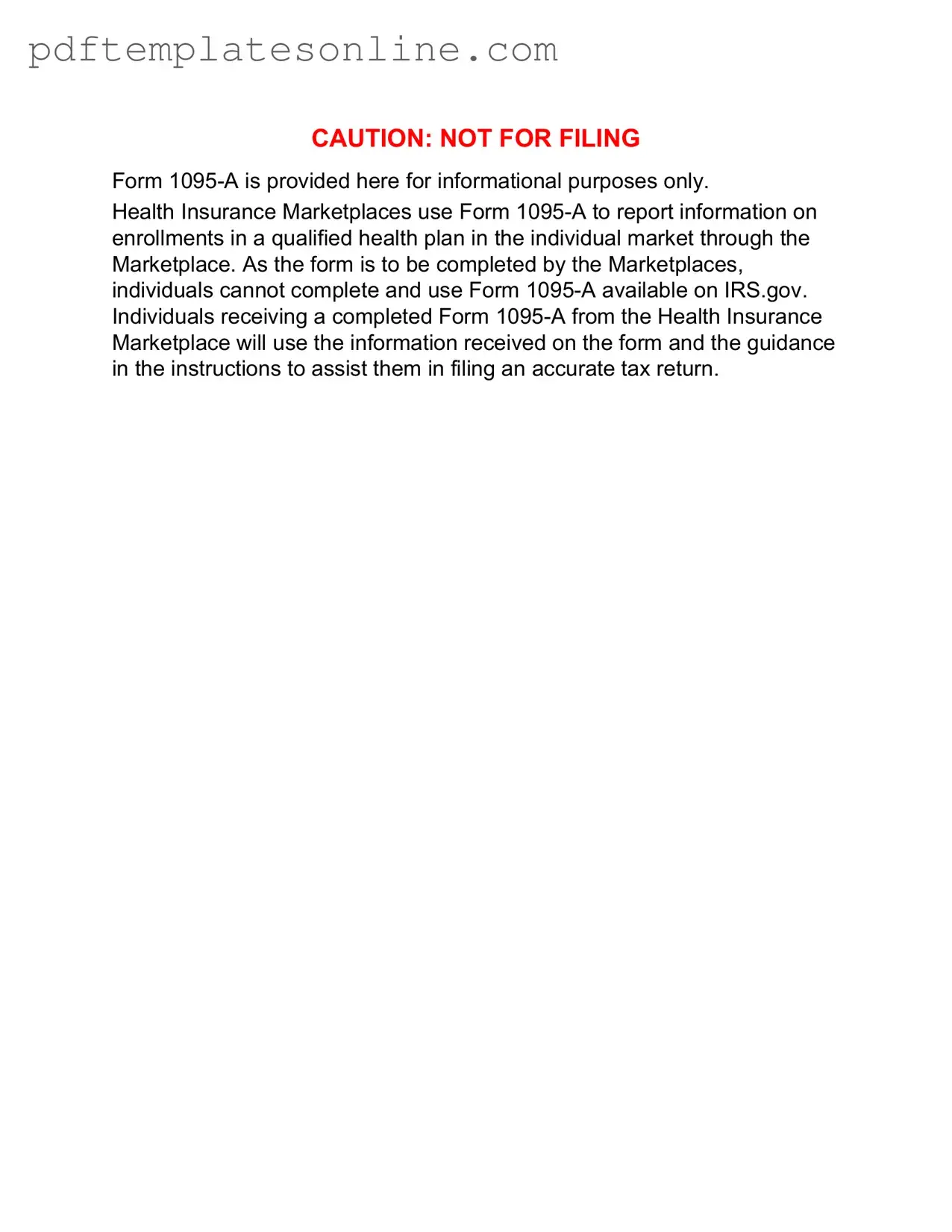Filling out the IRS 1095-A form can be a daunting task, and many individuals make common mistakes that can lead to complications down the line. One frequent error is not including all household members. It’s essential to ensure that everyone who was part of your health insurance plan during the tax year is listed. Omitting a spouse or dependent can result in discrepancies that may delay your tax return.
Another mistake involves incorrect information regarding the coverage period. The 1095-A form requires accurate dates for when the coverage was active. Failing to specify the correct start and end dates can lead to confusion and potential issues with the IRS.
Many people also overlook the importance of verifying the Premium Tax Credit (PTC) amounts reported on the form. If the amounts do not match your records or seem inaccurate, it’s crucial to address this before submitting your tax return. Discrepancies can result in delays or audits.
Some individuals mistakenly assume that the 1095-A form is optional. In reality, it is a required document for anyone who received health coverage through the Health Insurance Marketplace. Neglecting to include this form when filing can lead to penalties and complications with your tax return.
Another common error is failing to sign and date the form. While this may seem trivial, it is a necessary step to validate the information provided. An unsigned form can be considered incomplete and may not be accepted by the IRS.
In addition, people sometimes confuse the 1095-A form with other tax forms related to health insurance, such as the 1095-B or 1095-C. Each of these forms serves a different purpose, and using the wrong one can lead to significant misunderstandings and errors in your tax filing.
It’s also important to check for typographical errors. Simple mistakes, such as misspelled names or incorrect Social Security numbers, can create unnecessary complications. Double-checking the information before submission can save time and hassle.
Finally, many individuals neglect to keep a copy of the completed 1095-A form for their records. Retaining this document is essential, as it serves as proof of health coverage and may be needed for future reference or audits. Keeping organized records can help streamline the tax filing process in subsequent years.
